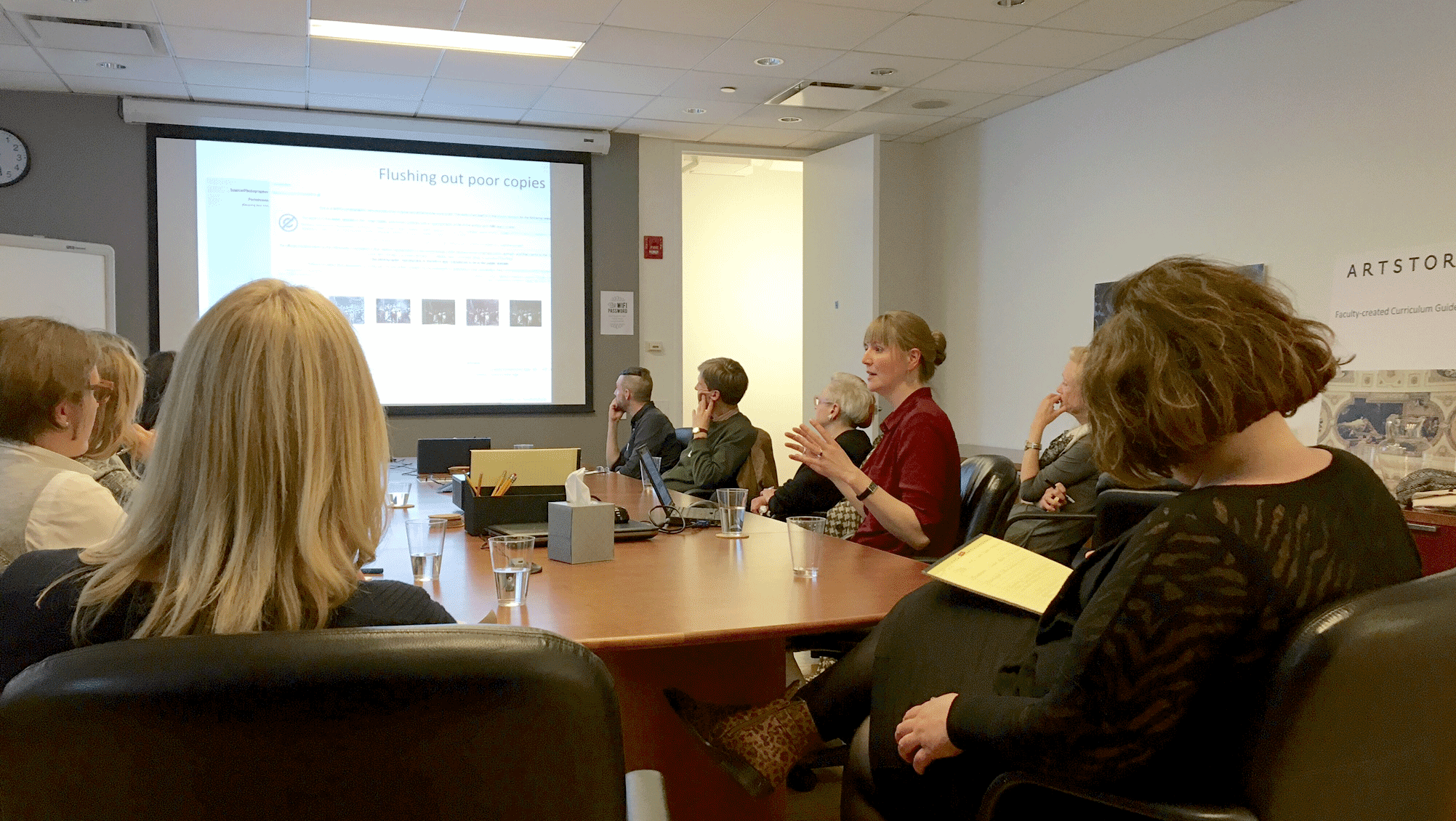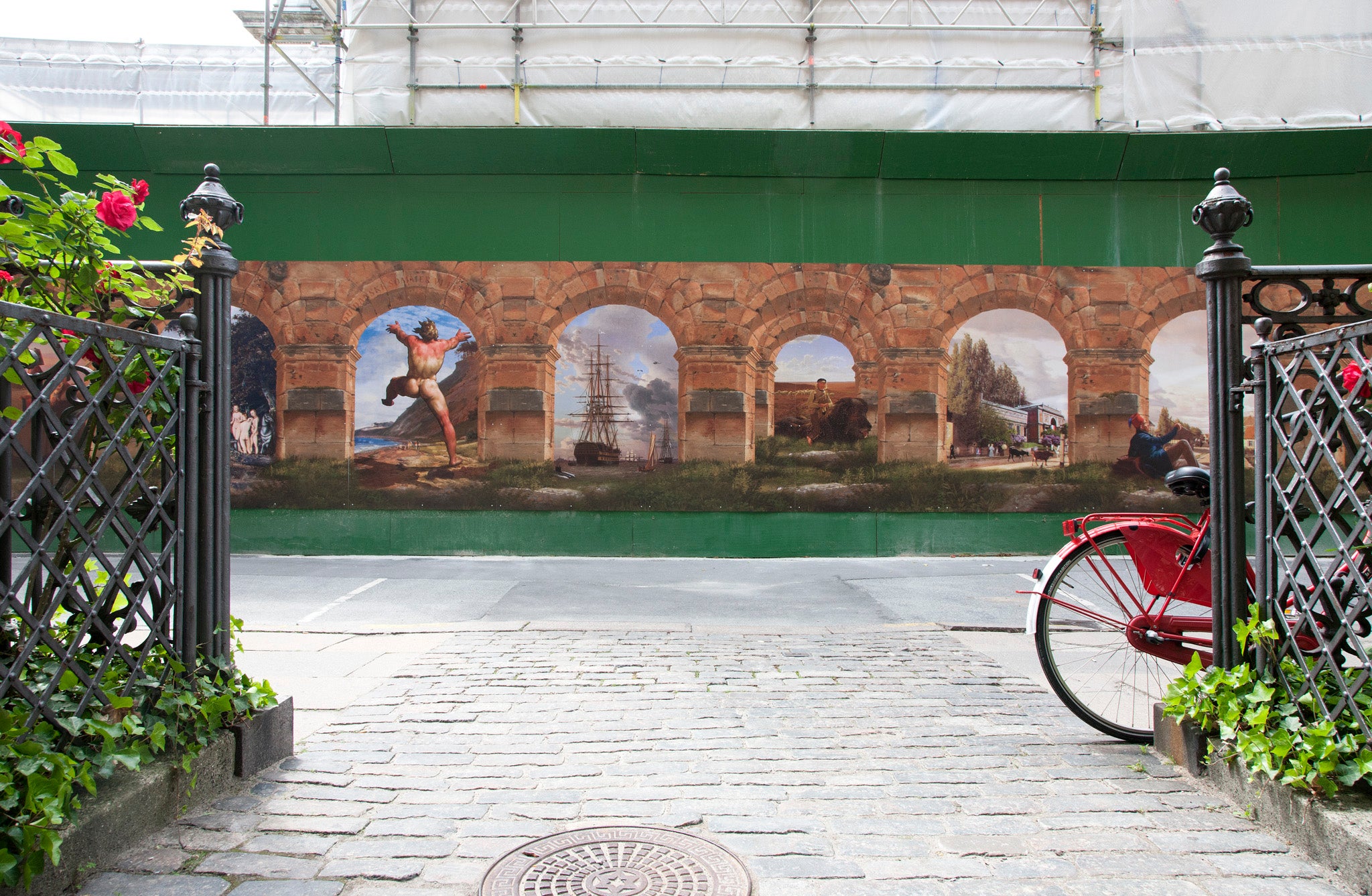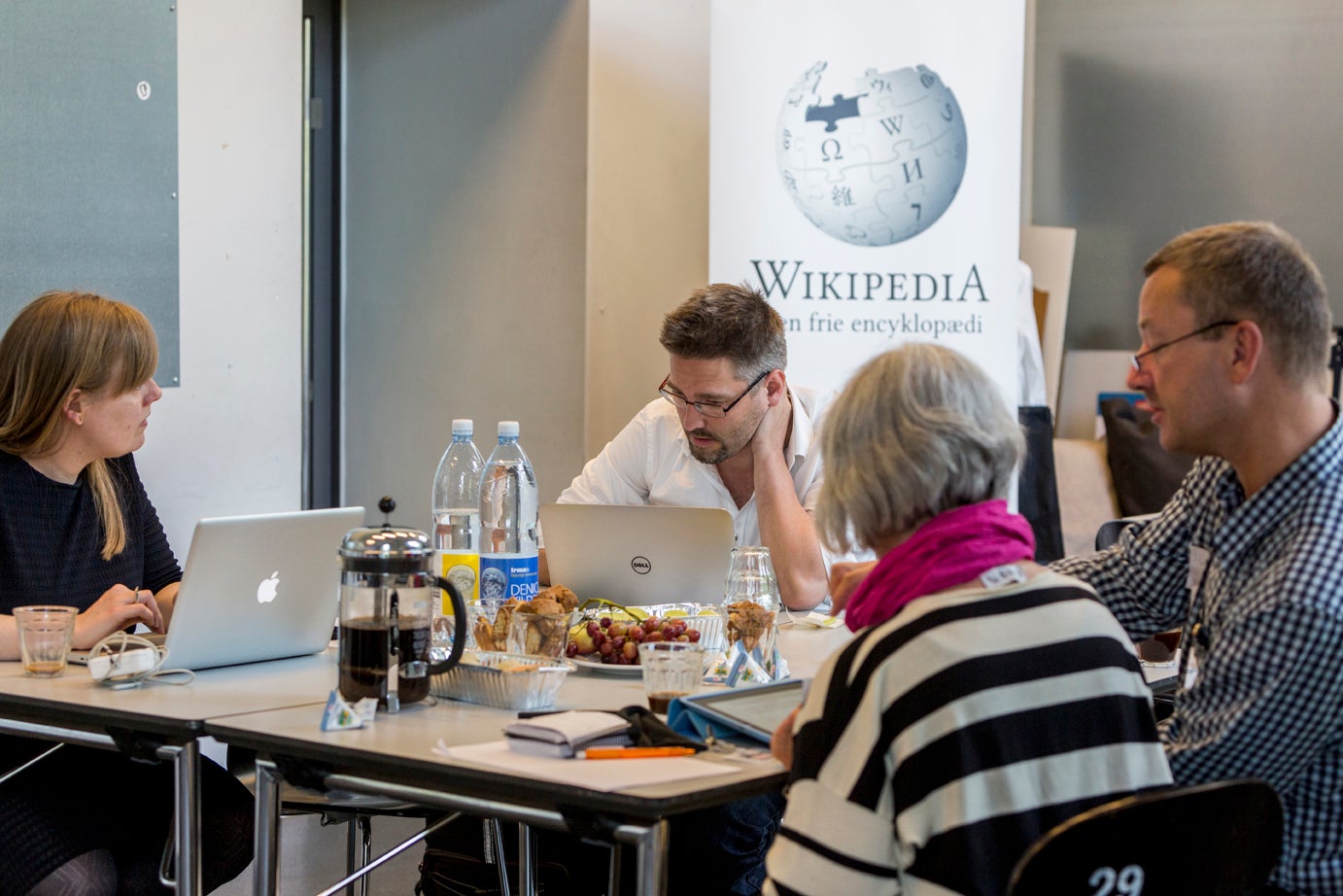
On May 5th, Merete Sanderhoff, curator and senior advisor at the National Gallery of Denmark (Statens Museum for Kunst), presented “Sharing is Caring” (you can see her slides here) at the Artstor offices for a group of professionals in the arts and cultural heritage fields, as well as members of the American Friends of SMK. We took the opportunity to do a brief interview.
Artstor: The SMK is working towards releasing its digitized collections into the Public Domain. How does that fit in with the museum’s mission?
MS: The museum is a public institution, and we see ourselves not as the owners but as stewards of our collections. We believe these collections are for everyone, so making them freely available very naturally aligned with our mission.
It’s also a way to show the breadth and depth of our collection, instead of just the canon. The Rijksmuseum provided a great example: they have gone the farthest in making their public domain materials free and providing the tools to work with them, and today everything they have online is being seen and used. It’s the Long Tail in action—the more obscure works get much fewer views than the peak, but together the views of the lesser-known works add up to much more than for the canon.
What are you learning as you make SMK’s images freely available?
What we’re learning from becoming an OpenGLAM museum is that it’s not enough to just provide access to the images; in a sector that has long taught audiences that they can’t use artworks without permission, we have to teach them that it’s their cultural heritage, that it belongs to them, and that they should feel free to use it.
How are you communicating with people to let them know that this is available to them?
We try to get the message out through blogs, conferences, social media, and by helping them get started working with the materials.

For example, in Copenhagen we’re in the middle of a huge expansion of the subway system, which has led to ugly fences around the construction through the city. So in collaboration with The Copenhagen Metro Company, and in consultation with the locals affected by the construction, a group of young creatives from SMK Young People’s Art Labs created a 70-meter long fence featuring remixes of artworks from SMK. It was more successful than anyone expected: the project won prizes, received rave reviews in the newspapers, and the locals have even asked for it to stay up through the entire construction process.
We’re also working with Danish Wikipedians, art historians, and art amateurs in monthly Wiki Labs to enrich Wikipedia. This is the first place where people look for information, so we want to be there with our quality images and data linking back to deeper information at our own website.

Since you’re making all these materials freely available on the museum’s site, why are you working with the Artstor Digital Library?
In addition to creative re-use, we want the images to be available for scholarly use. People go to Artstor for research, knowing that they can find high quality digital images with the correct colors and trustworthy metadata. We want students and researchers all over the world, who may not be able to physically come to the museum, to have easy access to stellar reproductions of the great artworks in our collection. It’s a way to extend our public mission to the world.
What do you hope to see happen in the future?
I would really love to see public schools take these materials as a resource to teach any subjects, not just art history. And I would love for them to do hands-on things with them, it’s the most effective way to learn—not passively, but actively working with the images. Make them part of you. We know that children who work with art in creative and playful ways grow to not only appreciate art and museums in the future, but also to be more socially aware and actively engaged citizens, as Rob Stein, Chief Program Officer at AAM, has written.
Learn about Artstor’s collaboration with the Statens Museum for Kunst and view the images that are currently available in the Artstor Digital Library. We’re working together to bring many more—stay tuned!


